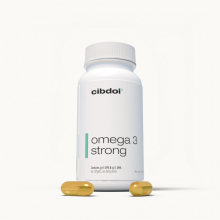Is Avocado Omega-3 or Omega-6?
Published:
Avocados have become an increasingly popular food in recent years, hailed for their creamy texture and numerous health benefits. One area of interest is their fat content, specifically omega-3 and omega-6 fatty acids. But which ones do avocados actually contain?
Contents:
This article will examine the evidence on avocado's fatty acid profile and whether they provide more omega-3 or omega-6. We'll look at:
- The differences between omega-3 and omega-6 fatty acids
- Why the ratio of these fatty acids matters for health
- The main types of fats found in avocados
- The specific omega-3 and omega-6 content of avocados
- How avocados compare to other high-fat plant foods
- Tips for balancing your omega-3 and omega-6 intake through diet
By the end, you'll have a clear understanding of whether avocados are a better source of omega-3 or omega-6.

The Difference Between Omega-3 and Omega-6
To understand whether avocado is high in omega-3 or omega-6, it helps to first explain what these fatty acids are.
Omega-3 and omega-6 are two main types of polyunsaturated fats. They are called “essential” fatty acids because our bodies cannot produce them - they must be obtained through the diet.
The main omega-3s are:
- Alpha-linolenic acid (ALA)
- Eicosapentaenoic acid (EPA)
- Docosahexaenoic acid (DHA)
Common omega-6s include:
- Linoleic acid (LA)
- Gamma-linolenic acid (GLA)
- Arachidonic acid (AA)
Omega-3s and omega-6s have related but distinct functions in the body. Omega-3s help reduce inflammation, while omega-6s promote inflammatory responses in excess.
For optimal health, we need both omega-3 and omega-6 fatty acids. The key is getting them in the right balance.
Why the Omega-3 to Omega-6 Ratio Matters
Historically, humans evolved eating a diet with a omega-6 to omega-3 ratio close to 1:1.
But in modern Western diets, that ratio is very skewed towards omega-6, with ratios around 10:1 to 50:1.
Having far more omega-6 than omega-3 promotes an inflammatory state in the body that drives many chronic diseases like heart disease, diabetes, arthritis, and obesity.
Experts recommend lowering dietary omega-6s and increasing omega-3s to rebalance this ratio. A healthy target is 2:1 to 4:1 omega-6 to omega-3.
When determining the value of a food source, it’s important to consider not just the total amounts of each omega, but their relative ratio as well.
Main Fats in Avocados
Avocados are unique among fruits in that about 75% of their calories come from fat.
The primary fats in avocado are:
- Monounsaturated oleic acid - Comprises around 70% of the total fat content. Linked to reduced inflammation.
- Polyunsaturated linoleic acid (omega-6) - Around 12% of total fat. Essential but pro-inflammatory in excess.
- Polyunsaturated ALA (omega-3) - Makes up around 1% of total fat. Anti-inflammatory but low compared to omega-6.
- Saturated fats - Around 14% of total fat. Can raise cholesterol at high intakes.
So while avocados contain both omega-3 and omega-6 fatty acids, the profile is predominantly monounsaturated and omega-6 linoleic acid.
Omega-3 and Omega-6 Contents of Avocados
To get more concrete numbers, here is the typical omega-3 and omega-6 content in 100 grams (about 1/2 an average avocado):
- Total fat: 14.7 grams
- Omega-3 ALA: 132 milligrams
- Omega-6 LA: 1,825 milligrams
Based on these figures:
- Omega-6 is over 10 times higher than omega-3 in avocados.
- The ratio of omega-6 to omega-3 is approximately 14:1.
So although avocados contain both essential fatty acids, their omega-6 content exceeds the amount of omega-3 by a significant margin.
Avocado Omega Profile Versus Other Plant Foods
How does the omega-3 and omega-6 balance in avocados compare to other high-fat plant foods?
Here is the omega-6 to omega-3 ratio for some common options:
- Avocados: 14:1
- Olive oil: 13:1
- Almonds: 32:1
- Walnuts: 4:1
- Chia seeds: 3:1
- Flaxseeds: 1:4 (more omega-3 than omega-6)
The takeaway is that most plant sources are higher in omega-6 compared to omega-3, with the exception of flax and chia seeds.
However, nuts like walnuts provide a better omega balance than avocados and oils.
Tips to Balance Omega-3 and Omega-6 Intake
Based on the nutrition facts, avocados contain far more omega-6 than omega-3. Some tips for balancing your intake:
- Eat avocados in moderation: They are healthy but cannot meet omega-3 needs alone. Limit to 1/4 to 1/2 per day.
- Increase omega-3 rich foods: Such as fatty fish, flaxseeds, chia seeds, walnuts and canola oil. Aim for 1-2 servings per day.
- Choose omega-balanced oils: For cooking, dressings and sauces, opt for oils higher in omega-3 instead of avocado or olive oil. Good picks are flax, soybean and canola oil.
- Limit processed and fried foods: These provide excess omega-6 from vegetable oils while lacking omega-3s.
- Consider supplements: Algae oil supplements provide concentrated, plant-based EPA/DHA omega-3s to help restore balance.
Following an overall healthy diet with a variety of plant and animal foods can help optimize your essential fatty acid intake.
Conclusion
To summarize, avocados contain both omega-3 and omega-6 fatty acids - however, they are predominantly a source of monounsaturated fat and the omega-6 linoleic acid.
Based on nutrition data, the ratio of omega-6 to omega-3 in avocados is around 14:1, which is significantly imbalanced.
For better omega-3 intake, fatty fish and foods like flaxseeds, chia seeds and walnuts are healthier choices. Enjoy avocados in moderation along with a varied diet to meet your essential fatty acid needs.
Eating a balance of omega-3 and omega-6 fatty acids is important for fighting inflammation and staying healthy. Be mindful of getting enough omega-3s from foods or supplements when eating high-fat plant sources like avocados.















